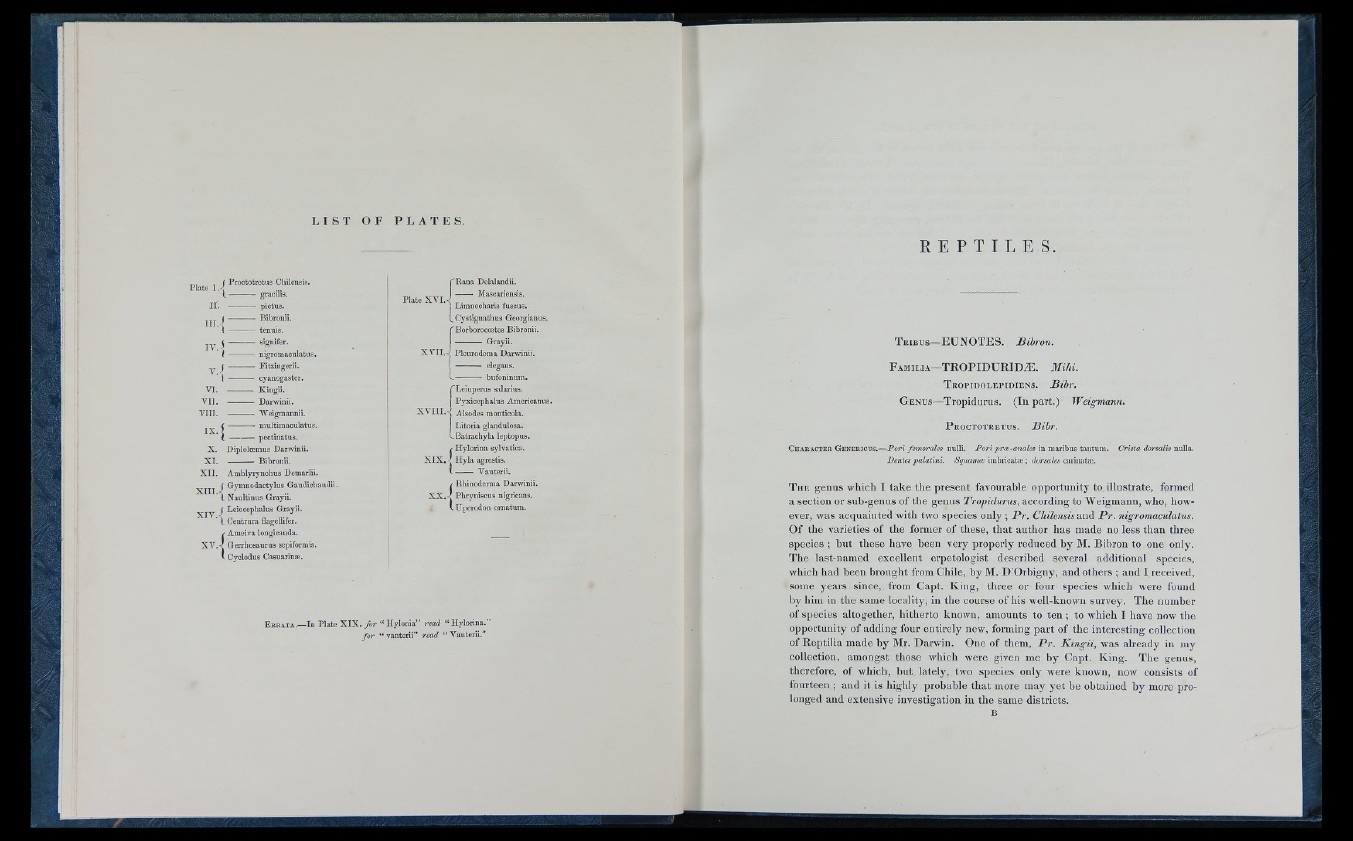
L I S T O F P L A T E S .
R E P T I L E S .
Piute 1.
II,
nr.
IV
( Proctotretus Chilensis.
l - - gracihs.
- pictus.
- Bibronii.
- tenuis.
VI
V II
v i i r
j ---------- signiter.
’ < --------- nigromaculatus.
I ------ — Fitzingerii.
' i ------- cyanogaster.
Kingii.
---------- Darmnil.
---------- Weigmannii.
f - multimaculatus.
’ Í pectinatus.
Diploltemus Darwinii.
Bibronii.
Amblyrynchus Demarlii.
Í Gymnodactylus Gaudicliaudii.
L Naultinus Grayii.
( Leiocephalus Grayii.
\ Centrura flagellifer. {Ameiva longicauda.
X.
XI.
X II.
Gerrhosaurus sepiformis.
Cyclodus Casuarin«.
Rana Delalandii.
Mascariensis.
'j Limnocharis fuscus.
I, Cystignathus Georgianus.
Borboroccetes Bibronii.
Grayii.
Pleurodema Darwinii.
elegans.
.---------- bufonlnum.
Leiuperus salarius.
Pyxicephalus Americanus.
Alsodes montícola.
Litoria glandulosa.
-Batrachyla leptopus.
/ Hylorina sylvatica.
X IX . I Ily la agrestis.
I Vauterii.
/ Rhinoderma Darwinii.
X X ,< Phryniscus nigricans,
vUperodon omatum.
EnBATA.—In Plate X IX . fo r “ Hylonia” read “ Ilylorma.’
fo r “ vanterii” read “ Vauterii.”
T r i b u s—EUNOTES. JBihron.
F a m i l i a — T R O P ID U R ID ^ . Mihi.
T r o p i d o l e p i d i e n s . Bibr,
G e n u s—Tropidurus. (In part.) Weigmann.
P r o c t o t r e t u s . Bibr.
C haracter G enéricos.— Pori femorales nulll. Poriprw-analcs in ma ribus tan tum . Crista dorsalis nulla.
Denies palatini. Squama) im bric a tie ; dorsales carinatee.
T h e genus which I take the present favourable opportunity to illustrate, formed
a section or sub-genus of the genus Tropidurus, according to Weigmann, who, however,
was acquainted with two species only ; B r . Chilensis and P r . nigromaculatus.
O f the varieties of the former of these, that author has made no less than three
species ; hut these have been very properly reduced by M. Bibron to one onlyL
The last-named excellent erpetologist described several additional species,
which had been brought from Chile, by M. D ’Orbigny, and others ; and I received,
some years since, from Capt. King, three or four species w'hich were found
by him in the same locality, in the course of his well-known survey. The number
of species altogether, hitherto known, amounts to ten ; to which I have now the
opportunity of adding four entirely new, forming part of the interesting collection
of R cptilia made by Mr. Darwin. One of them, P r . Kingii, was already in my
collection, amongst those which were given me by Capt. King. The genus,
therefore, of which, but lately, two species only were known, now consists of
fourteen ; and it is liighly probable th a t more may yet be obtained by more prolonged
and extensive investigation in the same districts.
B